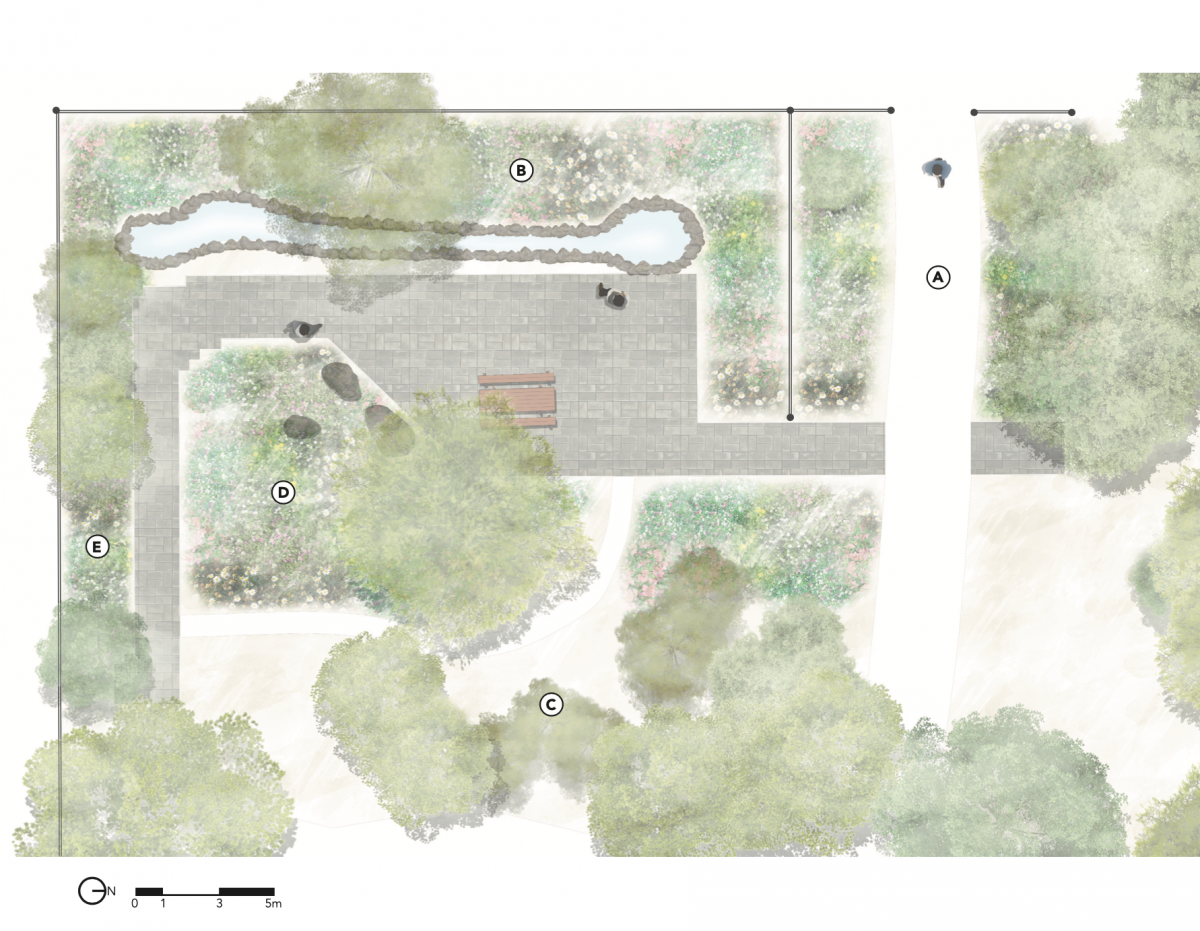The Native Plant Garden
Click to enlarge map.
*Letters represent a general location of plant species - refer to the plant list for plant locations within the garden
This garden is intended to display how a backyard can be a successful biodiverse landscape through the use of native Ontario plants only. But why is this important? Simply put, local plants support local ecosystems. Native wildlife species have a special relationship with native vegetation, as they have evolved to support each other based on their local climate conditions. For example, our endangered Monarch butterflies rely on milkweed for food during its caterpillar stage which is essential for their survival.
The garden introduces wonderful formal elements – such as the long, shallow pond beloved by birds, the removal of any kind of ‘lawn’ space, and effective use of large perennial masses. The native shrubs flanking the stone dust path create a living arbour that provides nectar to butterflies, fruit for small mammals and a larval food source for caterpillars. A particular showcase feature of this garden is the trumpet vine that encases the entrance fence, attracting hummingbirds during its bloom period. The shallow meandering stream can be found adjacent to the patio, where birds enjoy to bathe. Bathers seen here include Indigo Buntings, Eastern Bluebirds, Baltimore Orioles and Cedar Waxwings. The woodland and forest edge is planted with a wide variety of shrubs and herbs to provide not only an aesthetically pleasing backyard planting design but also food, cover and nesting sites for wildlife.
Plant List
Surrounding the stream, you can find native plants that attract a variety of native pollinators including Trumpet Creeper (Campsis radicans), Closed Bottle Gentian (Gentiana andrewsii) and Great Blue Lobelia (Lobelia siphilitica). For all plantings intended for this garden, download the revitalization plant list PDF below. Note that over time the actual plants may change!

